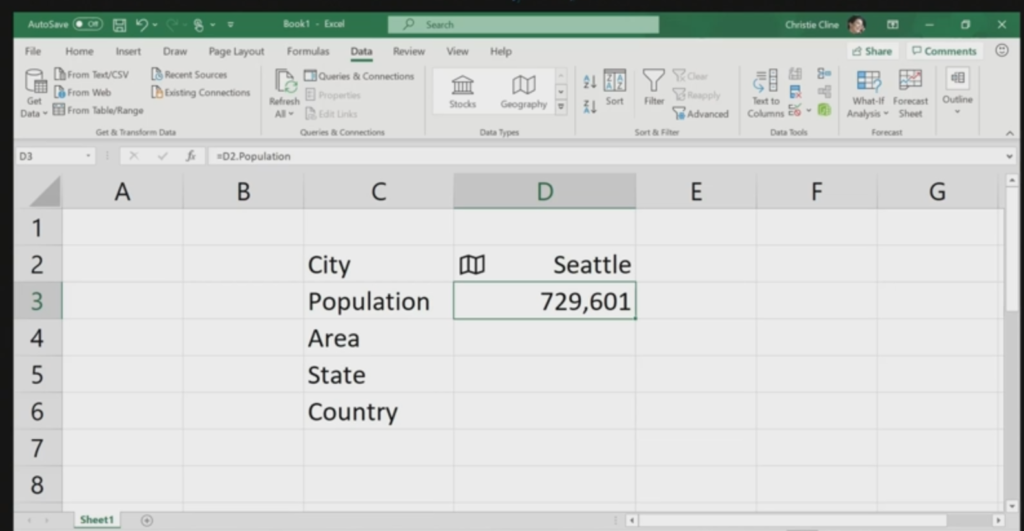
Microsoft Excel allows to connect and work on your own data type.
Excel is now allowing customers to work on their own data as a data type. As per Microsoft blogpost if, for example, you have a system for tracking your customers, and you want to bring that customer data into Excel for analysis, now you can import as a richly structured “customer” data type structured in the way you or your company have defined “customer.” If you are a Power BI customer, Excel will automatically connect to Power BI, and any data you’ve published will be easily discoverable and flow into Microsoft Excel as a structured data type. If you have data you’d like to work with as a data type in Excel, just publish it into Power BI, and the rest is taken care of for you and anyone else with access.
If you don’t have Power BI, you can still leverage the Power Query technology in Excel to manually connect to dozens of different types of data sources, and specify that you want the data to be structured as a data type.
Public Data Types
Microsoft Excel is also expanding on public data types like stocks and geography. Microsoft has partnered with Wolfram (Wolfram Research is computer, web and cloud software company) to allow more data types to flow into Excel. Users can analyze data types like chemistry, nutrition, zip codes, historical events, even genetics. Microsoft’s Insider Beta program (https://insider.office.com/en-us/) allows users to take a look at these features and provide feedback.
https://www.microsoft.com/en-us/videoplayer/embed/RE4Hy77
With Google Sheets gaining popularity the inclusion of these new features will help Excel.
Creating own data type in Microsoft Excel:
You can also create your own data types connecting directly to almost any data source you want. Excel has always supported a large set of data sources for direct import into the spreadsheet, and thanks to Power Query, you can also build powerful queries and transforms to get the exact shape of data you’re looking for.
Now, when you import data into your spreadsheet, you’ll have the option to transform that data into a data type. In Power Query, you can create your very own custom data types using any source of organization data available within the Get Data menu—files, databases, online services, other sources—the list is long. From here, you can pull in, clean up and curate, and transform that data into custom data types according to your needs and preferences.
Power BI data types are available in Microsoft Excel for Windows (current channel) for all Microsoft 365/Office 365 subscribers that have a Power BI Pro service plan.
Power Query data types are currently rolling out and will be available in the coming weeks for all Microsoft 365/Office 365 subscribers, for use with all data sources supported in your SKU.
Wolfram Alpha data types are available for preview to Office Insiders.
Read the complete blogpost from Microsoft here https://www.microsoft.com/en-us/microsoft-365/blog/2020/10/29/connect-to-your-own-data-with-more-new-data-types-in-excel/

